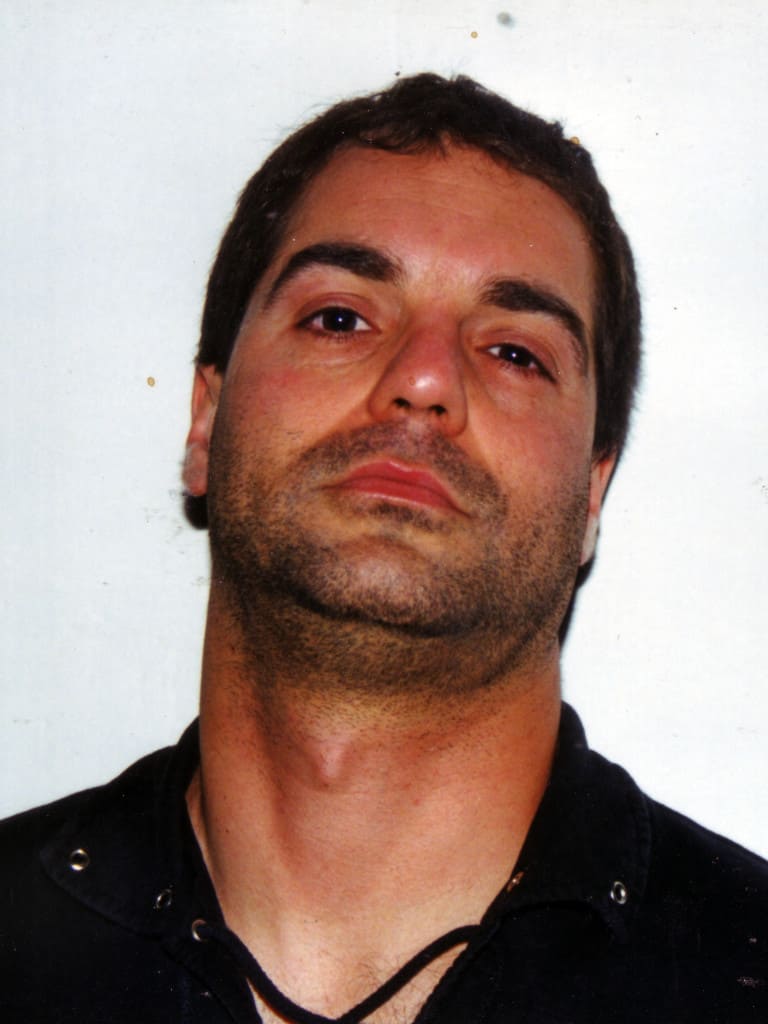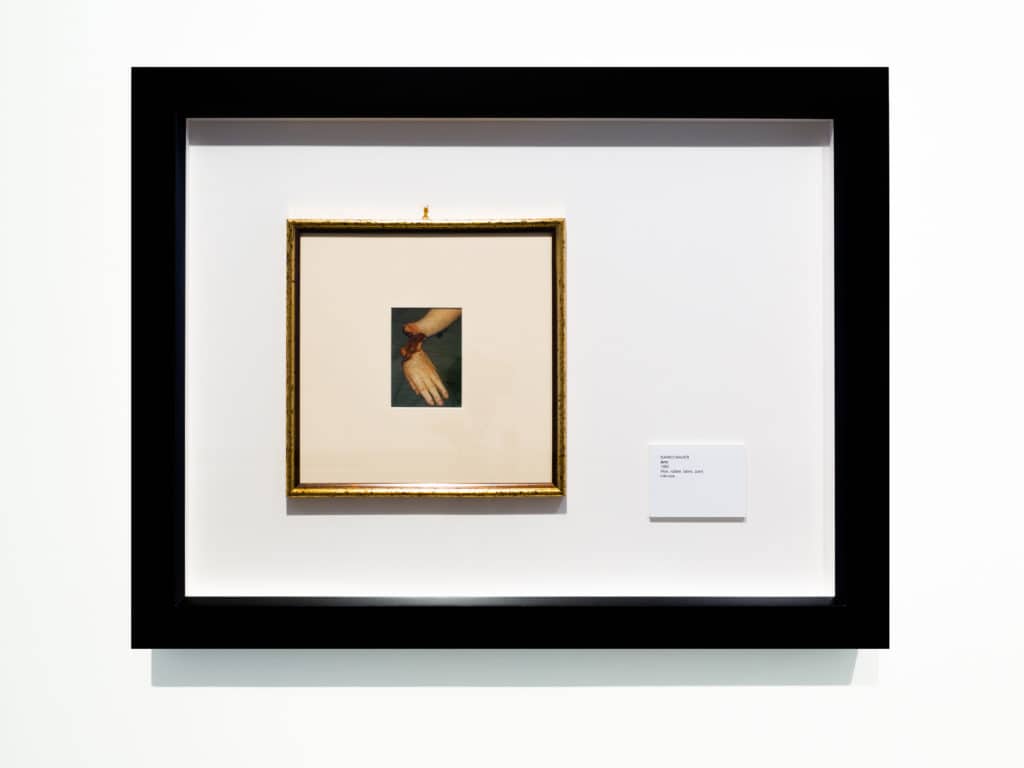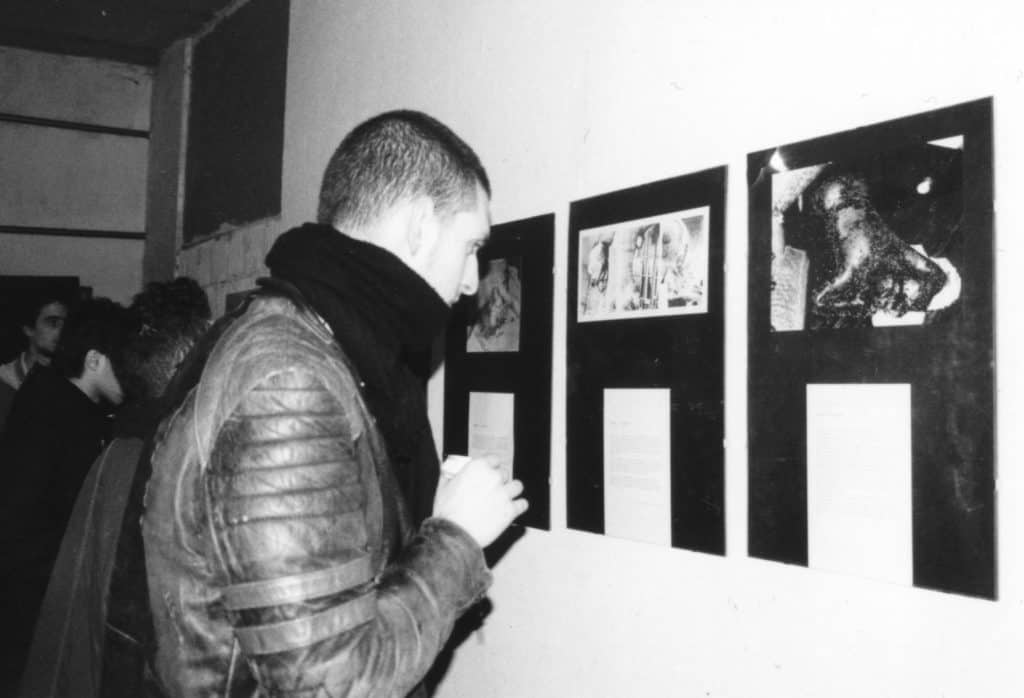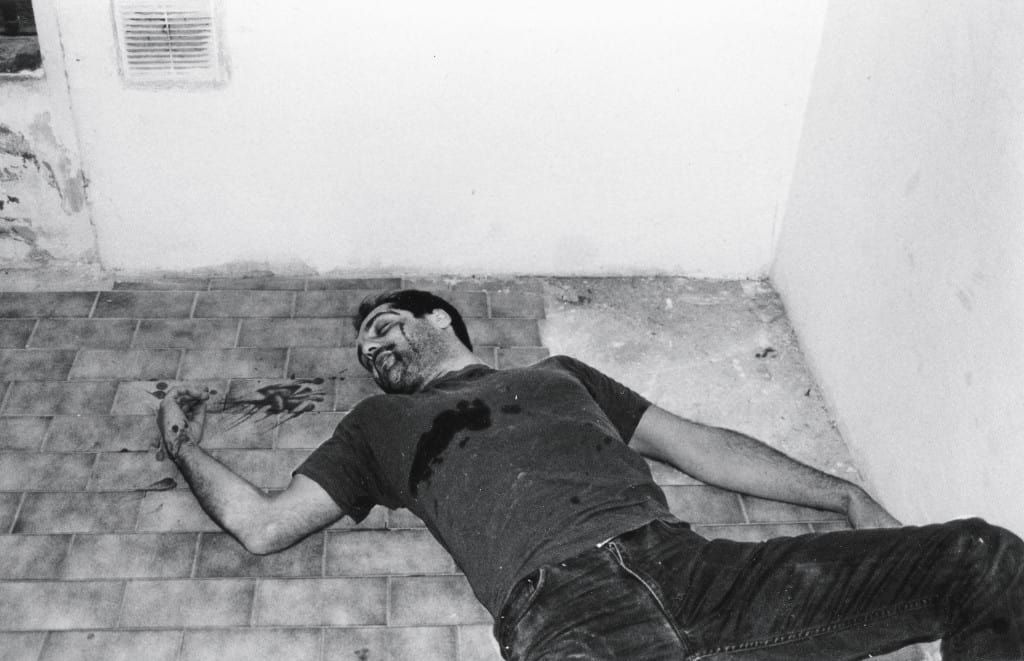Articles & Features
The Mysterious Case Of Darko Maver. Or The Many Deaths Of This Most Elusive of Artists

“The museum is a sheer temple where art is celebrated, faked and degraded, just as prison degrades life making it unrecognisable. And the theorem, once more, proves to be exact: an artist (an identity), a style, the works… and the system is ready to absorb everything and turn life into commodities….all this won’t happen to Darko Maver.”
0100101110101101.ORG and Luther Blissett
It is 1998, and a whisper begins to circulate within the underground art scene in Europe about the sinister work created by a mysterious Serbian performer; it is rumoured that this little known provocateur artist is roaming around Yugoslavia setting up disturbing installations in public spaces in order to stir people’s consciences about the brutality of the ongoing Balkan War. As if staging a crime scene, he places realistic sculpted figures, debased and dismembered, to simulate the victims of murder, abuse, or torture, leaving them for discovery in motel rooms or abandoned buildings. These mutilatedmannequins that look like gruesome life-size puppets are said to be so realistic that the people who find them become traumatised and call the police in shock.
In a Europe that was facing the horrors and wreckage of the Yugoslav War, the humanitarian tragedy of what became the continent’s bloodiest conflict since the Second World War, this hitherto outsider artist was able to express the dreadful reality of a devastated country through wax, fibreglass, and PVC, inevitably attracting considerable press attention. His name was Darko Maver and he would become a cause celebre that shocked the art world and beyond..

“From zero to the Venice Biennale in one year, not even Peggy Guggenheim would have been able to do better.”
0100101110101101.ORG
The unsettling work of Darko Maver
Though the artist seemed particularly elusive, some scant information about him soon began to transpire: born in 1962 in Krupanj, Serbia, he had attended the Academy of Fine Arts in Belgrade where he had begun to explore with plastic mediums, especially wax. Unfortunately, the tense atmosphere and renewed hostilities that would culminate in the outbreak of the war had forced him to leave the academy without completing his education; he had moved first to Ljubljana, and then from the Slovenian capital city to Italy. In the early nineties, he had set sail back to his native region to start the nomadic artistic project that would later make him an underground legend. He had travelled across the war-torn Balkans, arranging bloody, grotesque installations which were later documented and collected under the title Tanz der Spinne (‘Dance of the Spider’). Between sculpture and performance art, his work was reminiscent of the hyperrealist experience but with a hint of horror; instead of the everyday banality of Duane Hanson’s sculpted figures – the poster artworks of Hyperrealism – Maver’s tortured corpses and torn asunder limbs composed grisly set-ups altogether harder to digest.

In August 1998, the documentation of Tanz der Spinne was displayed at the Kapelica Gallery in Ljubljana; it was the first of a relatively long string of exhibitions dedicated to the artist in the following years. In fact, before the end of that same year, the Yugoslav authorities issued a law threatening imprisonment against him for unpatriotic activities, culminating on January 13th, 1999, when Darko Maver was supposedly arrested. A local magazine reported that he was accused of “hostile propaganda…support of violent acts…planning and glorifying violent and armed acts moved by hostility towards the State. (…) In such hard times, the parody of fear and blood is intolerable”.
His work censured and destroyed, Maver immediately became the political artist-dissident par excellence, as well as the emblem of the fight against censorship. In February, an exhibition in Bologna featured Tanz der Spinne among the works of other artists united by the theme of freedom of speech, a show critically acclaimed and applauded by hundreds of visitors. Some prestigious magazines and periodicals shone the spotlight on Maver’s story, with many supporters signing the “Free Art Campaign” as a solidarity petition calling for his release.

On April 30th, 1999, the newspapers reported a newly discovered tragedy as fact: the enigmatic Darko Maver had been found dead at the Podgorica prison in mysterious circumstances with a brutal picture of the scene as proof. What could have readily been interpreted as one of his horrific installations, was in actuality the brutalised corpse of the artist himself. The news raised questions and provoked an intense conspiracy debate: was it an execution? Or was it suicide as an ultimate, dramatic artistic action? Someone read the whole of Maver’s life and work as a critique of media exploitation and manipulation of the victims’ images in the time of war. Anyway, as so often happens with artists and other creatives, his death became the swiftest way to celebrity: mysterious martyr of truth, Darko Maver had transitioned to full blown mythological martyr status.

Not even two months later, the Bienniale of Young Artists held in Rome hosted a theatrical performance entitled ‘Awakening, a tribute to Darko Maver‘ showing a documentary about his life and work. More significantly still, the 48th Biennale in Venice of the following September featured the documentary ‘Darko Maver – The Art of War‘ as a posthumous artistic canonisation of this underground character by the most prestigious institutional recognition possible within the mainstream art system.
The Great Art Swindle
Nevertheless, this story, shrouded in mystery, was far from over. On February 6th, 2000, an astonishing disclosure shocked the art world once more: “I declare that I have invented the life and the works of art of the Serbian artist Darko Maver, born in Krupanj in 1962 and died at the Podgorica penitentiary on April 30th, 1999. (…)The museum is a sheer temple where art is celebrated, faked, and degraded, just as prison degrades life making it unrecognisable. And the theorem, once more, proves to be exact: an artist (an identity), a style, the works… and the system is ready to absorb everything and turn life into commodities…all this won’t happen to Darko Maver. Because Darko Maver doesn’t exist! Because his works don’t exist!”.
The mystery had been unravelled, when nobody expected it, and when the artist’s myth had already begun to fade from public consciousness: the whole art system had been sneeringly scammed. Authors of the statement were an artistic duo, at the time going by the moniker of 0100101110101101.org (corresponding to the letter ‘k’ in the binary code), in collaboration with Luther Blissett, an art collective numbering hundreds of European artists, activists, and pranksters. Maver’s face and public identity was actually that of Sicilian Roberto Capelli’s, a member of the Luther Blissett Project active in Bologna, while the name ‘Darko Maver’ belonged to a well known Slovenian criminologist.
Obviously, not only the persona was invented, but also his entire body of work and – even more gruesomely shocking – the photos passed off as documentation of his macabre installations were, in fact, pictures of real atrocities found on the internet, especially on the stomach-churning website Rotten.com, today permanently offline. The shot portraying “Maver’s death” was actually the only reconstruction: it had been taken in a garret in the centre of Bologna.

This was not the first time an artist had created a fictional identity, for example, in the 1920s Marcel Duchamp signed some of his ready-mades with the fictitious name of ‘Rrose Selavy’, and later posed dressed as a woman to be portrayed by Man Ray, putting a face to his own female alter-ego. Although Duchamp’s action was radical and provocative, it was mainly an expression of the artist’s fanciful personality coming from a figure deep-rooted in the art world, whilst the creation and perpetration of Darko Maver – or The Great Art Swindle – was instead meant to highlight the inadequacies of the art world by pointing out its artificial nature and the role played by curators, critics, and the traditional cultural institutions: “Darko Maver was a politically incorrect artist, his performances hard to digest; nevertheless he was ready to be absorbed into the art system. His work, once properly homogenised and deprived of its expressive force, was ready to go through the canonical way which links galleries, exhibitions, the art market, and finally takes to the eternal peace of the museum, apex of an anaesthetic process, of disarmament and sterilization, a process which art has always suffered. (…) Studied in details to penetrate the resistance of the art system, new Trojan horse, Darko Maver hasn’t failed”.
But who are the real authors of this artistic operation? It is indeed hard to answer this question, as there is no reliable biographical information. As for the Luther Blissett collective, it was a five-year project started in 1994, a “Robin Hood of the information age” especially active in Italy, Spain, and Germany. In 1999, the members symbolically committed seppuku, the samurai ritual suicide, even though some of them regrouped soon after as Wu Ming.
As for 0100101110101101.org, it is an artistic duo based in New York City, regarded as pioneers of Net Art and now working under a different nom de plume, Eva & Franco Mattes. Besides their hacktivist approach, they are masters of storytelling, operating mostly outside the industry norms. They play with emotional manipulation and the subversion of mass media to explore the impact of technology in modern society. They pull the wool over people’s eyes by exploiting collective expectations: in the case of Darko Maver, the world’s eyes were on the tragedy of the Balkan War which ensured the art system was counting on a controversial artist to arise from the ravaged former Yugoslavia; that is when the Mattes materialised the collective expectancy in the figure of the soon-to-be Serbian myth. They demonstrated how to create a successful artist just by manipulating media, both old and new. In fact, Maver was not only an “active riot against any dominant form of art”, but also a “media creature”. Reminiscent of Debord’s Society of the Spectacle, the swindle was a reflection on the role of media in attesting the line between fact and fiction, art and life: which one imitates the other? Twenty years after its execution, this disruptive and well-thought-out artistic operation still proves to be relevant and meaningful.